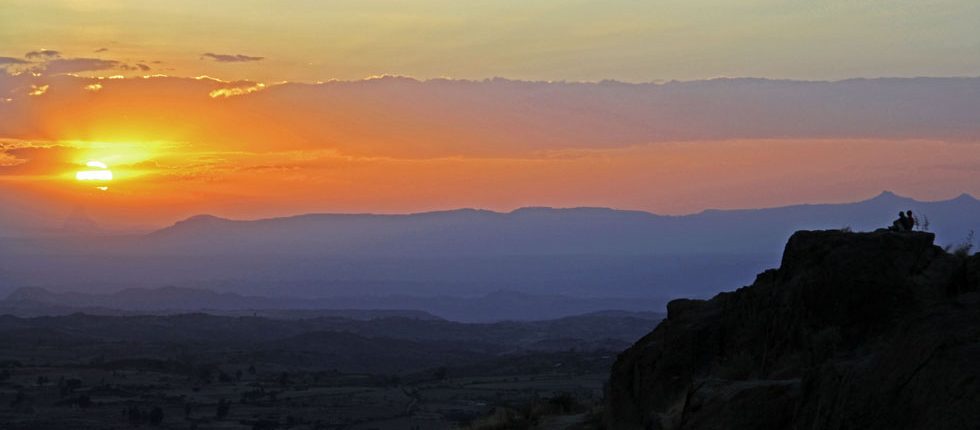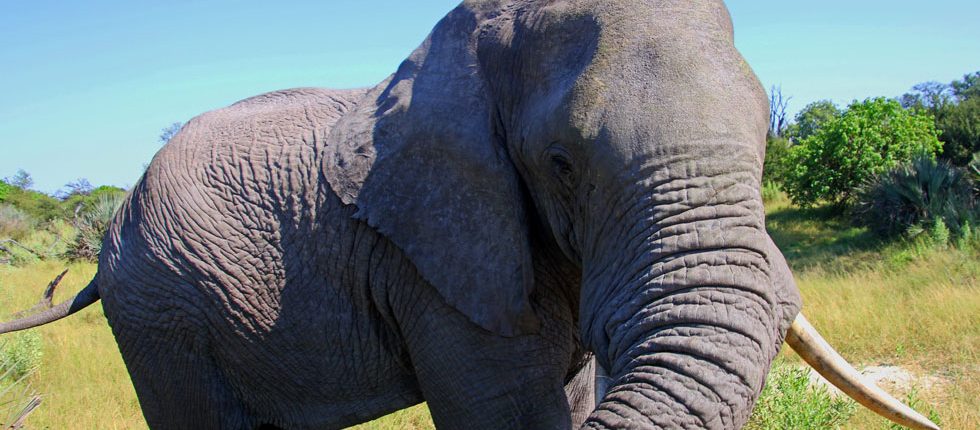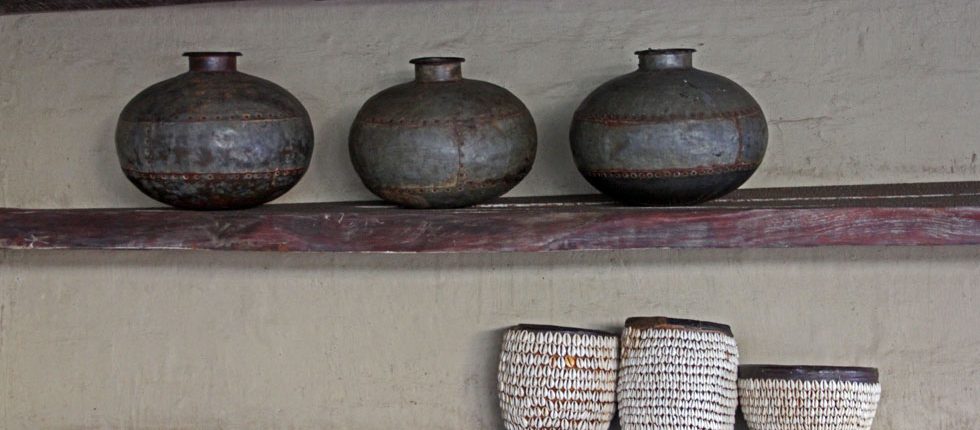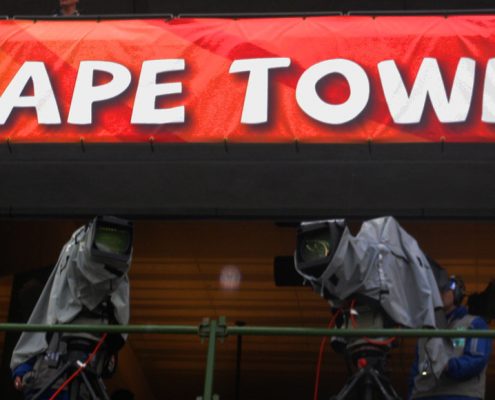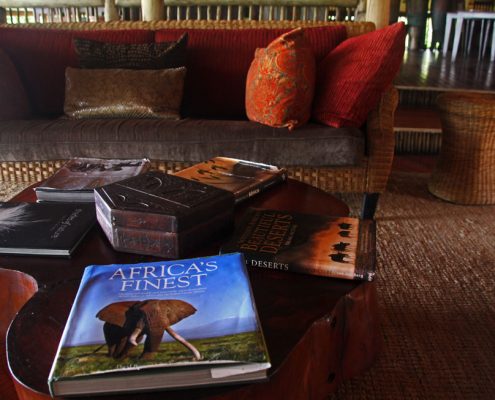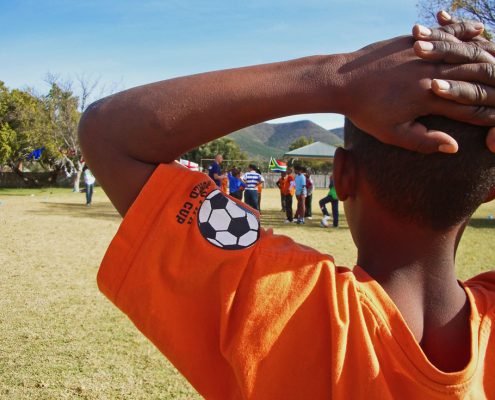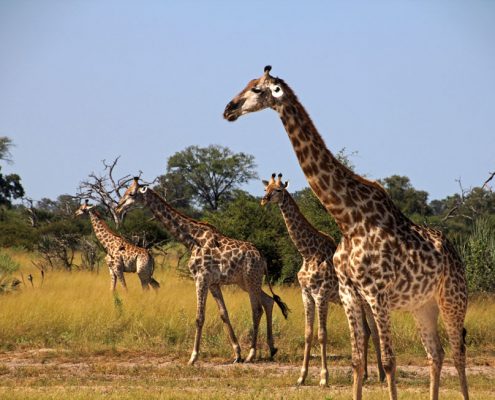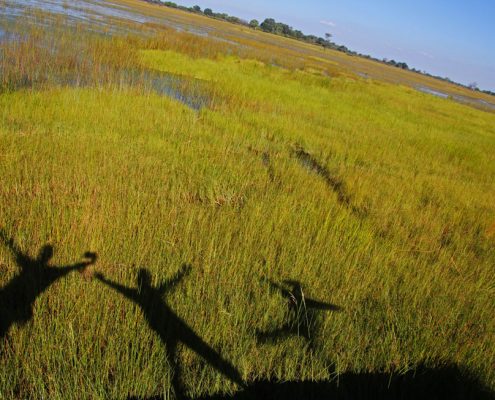South Africa
Top tip: Vegetarians beware of the braais and billtong
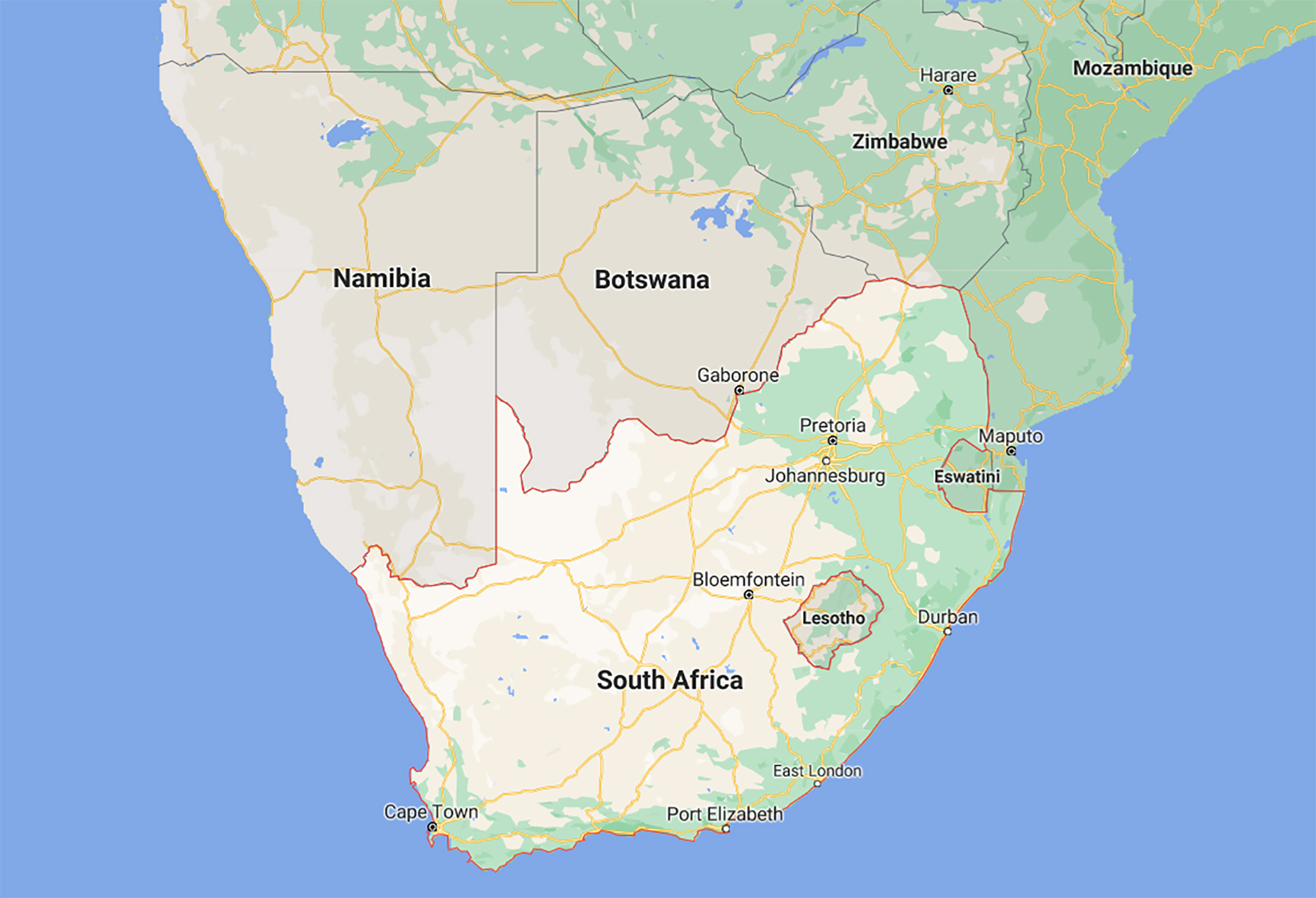
Geography
The Republic of South Africa lies at the southern end of the African continent. To the east is the Indian Ocean and on the western side is the Atlantic Ocean. The north is bordered by Namibia, Botswana, Zimbabwe, Mozambique and Swaziland. South Africa totally encloses Lesotho.
South Africa has three major geographical regions, namely plateau, mountains and the coastal belt. The high plateau has sharp escarpments which rise above the plains, or veld. The vegetation in open grassland, changing to bush in the Northern Transvaal, and Thornveld is the arid Southwest. Despite two major river systems, the Limpopl and the Orange, most of the plateau lacks surface water. Along the coastline are beaches and coves, and the vegetation is shrub-like. The mountainous regions which run along the coastline from the Cape of Good Hope to the Limpopo Valley in the Northeast are split into the Drakensberg, Nuweveldberg and Stormberg ranges.
South Africa is generally sunny and pleasant. Winters are usually mild, although snow falls on the mountain ranges of the Cape and Natal and occasionally in lower-lying areas. As South Africa lies south of the Equator, the seasons are the reverse of those in the northern hemisphere.
Facts and Figures
| Area | 1,219,090 sq km (470,693 sq miles). |
|---|---|
| Population | 49,991,300 (2010 estimate) |
| Capital | Pretoria (administrative). Population: 2,345,908 (2007). Cape Town (legislative). Population: 3,497,097 (2007). Bloemfontein (judicial). Population: pop – 369,568 (2007) |
| Language | The official languages are Afrikaans, English, isiNdebele, isiXhosa, isiZulu, Sepedi, Sesotho, Setswana, Siswati, Tshivenda and Xitsonga. |
| Religion | Most inhabitants profess Christianity of some form and belong to either Catholic, Anglican and other protestant denominations, Afrikaner Calvinist churches or African independent churches. There are also significant Hindu, Muslim and Jewish communities, and traditional beliefs are still practised widely, sometimes in conjunction with Christianity. |
| Time | GMT + 2. |
Highlights
The Southern Transvaal contains the richest gold reef in the world, with its man-made lakes provide facilities for boating, fishing and bird watching. Johannesburg has been transformed from a small shanty town into a bustling modern city, the centre of the world’s gold-mining industry and the commercial nucleus of South Africa.
The Eastern Transvaal, a high and virtually treeless grassland plateau of the Transvaal stretches for hundred of kilometres until it reaches the Drakensberg range of mountains, plunging into a beautiful sub-tropical woodland known as the Lowveld where vast numbers of animals can be found. Manyeleti Game Reserve, is perfect for game viewing on foot, and the Sabi Sabi Private Game Reserve offers excellent wildlife game-viewing of giraffe, antelope, warthog, lion, elephant rhinoceros, buffalo, leopard, hyena, zebra and bountiful birdlife.
Nelspruit is a good base for seeing the famous Sudwala Caves, of immense interest to scientists as well as tourists and comprise a linked series of chambers adorned with stalactites and stalagmites. Take a trip to Kimberley to see the De Beers Hall Museum‘s display of cut and uncut diamonds. Visit Nooitgedacht to see its pavements of Ventersdorp lava, over 2500 million years old, polished by slow-moving glaciers during an ice age 250 million years ago, and its ancient rock paintings.
Port Elizabeth boasts excellent shops, extensive parks and public gardens as well as all sorts of watersports. The Addo Elephant National Park protects the last of the Eastern Cape elephants, and the Zuurberg National Park is an evergreen coastal high forest where black eagles breed. The Garden Route encompasses the Outeniqua Mountains inland, arid plains and the Swartberg Mountains with their immense subterranean Cango Caves. The Western and Southern Cape is a perfect destination for wine lovers.
South Africa is a multi-ethnic country with staggeringly diverse cultures and landscapes, and eleven national languages. From deserts and elephants to surfing and penguins, bustling cosmopolitan cities with a European feel to small hunter-gatherer communities with their own unique dialects and culture, South Africa displays a new level of diversity.
Whether you’re an old safari fan looking to catch a glimpse of a black eagle or an endangered elephant, or a walking enthusiast looking to trek in the mountains, or are simply after a couple of week’s relaxing on a beach, South Africa has it all. And if you’re having some trouble deciding between the plentiful options, get into the spirit by relaxing with some sizzling meat hot off the braai (barbecue) and a glass of excellent local wine – you’ll soon find you’re more than ready to explore.
History
It seems likely that South Africa has been occupied by humans for around two million years. Stone Age artefacts date from 40,000 years ago, from which time there appears to have been a continuous human culture related to the Khoisan peoples. The Bantu population of the region arrived as a result of the great southernward migrations of Bantu peoples across central and southern Africa during the early and middle parts of this millennium. The European discovery of South Africa was roughly contemporaneous – the Portuguese navigator Bartholomew Dias ‘discovered’ the Cape of Good Hope in 1488.
When diamonds and later gold were discovered in the Transvaal around 1869, large numbers arrived to seek their fortune, many of whom were British. Because of the huge numbers of British, the President Paul Kruger of the Transvaal brought in strict franchise requirements as he worried the british would take over. Britain’s attempts at intervention resulted in the Anglo-Boer War, and the British victory in 1902 eventually resulted in the establishment of the Union of South Africa in 1910.
In 1948 the National Party came to power, and had remained in office ever since the abolition of apartheid in 1994. The National Party continued to cement the policy of apartheid, officially by separating development of all racial groups, effectively creating the semi-autonomous ‘homelands’ (Transkei, Bophuthatswana, Venda and Ciskei) comprising 13% of all land in the country. Though the homelands were officially styled ‘independent’, the ‘homelands’ were not recognised internationally as they remained entirely dependent on South Africa.
On February 2, 1990, President de Klerk announced the un-banning of the ANC (African National Congress), the South African Communist Party and 30 other anti-apartheid groups; the relaxation of the state of emergency; and the unconditional release of Nelson Mandela. Unfortunately the deep schism which emerged between the ANC and Inkatha exploded into violent clashes and loss of life while negotiations between the ANC and government defined a new constitutional structure for South Africa.
The elections in 1994 were monitored throughout the world as a celebration of democracy and ultimate destruction of apartheid; the last minute acceptance of the elections by The Inkarta Freedom Party, Archbishop Desmond Tutu’s ‘jig of joy’ and an almost carnival atmosphere concluded in Nelson Mandela being sworn in as President (less than half a Decade since his release from jail), the return of South Africa to The Commonwealth and the lifting of all economic and sporting blockades.
By and large the transformation of power has, to date, been relatively calm in comparison to some of the respected predictions. The world waits as one of the planet’s most important areas settles into a new and hopefully less hostile era. The continent of Africa certainly needs South Africa to take the reins in the most positive, harmonious and above all humanitarian fashion. Anyone lucky enough to have stepped foot in Africa knows they deserve the best.
South Africa’s economy completely dominates the southern part of the African continent. Agriculture is strong enough to allow South Africa virtual self-sufficiency in foodstuffs: livestock is widespread, sugar, maize and cereals are produced in large quantities. The foundation of the modern South African economy, however, is mining. The country has considerable deposits of common minerals such as coal, but also FO valuable ores which are in high demand: chromium, manganese, vanadium and platinum appear in the largest concentrations anywhere in the world. Its most valuable minerals, however, are gold and diamonds and South Africa has been the world’s largest producer and exporter of both.
Dutch settlers arrived in 1652 to start a victualling station for the Dutch East India Company. Shortly afterwards, in 1688 the French Huguenots arrived and then, after the British occupation of the Cape, British settlers arrived in 1820. During the 18th and 19th centuries, British and Boer settlers fought a series of wars with the local tribes. The British and Dutch argued over control of the Cape region and the British finally gained control in 1806. As a result of this the Boer pioneers, or Voortrekkers, moved northward to establish the independent republics of the Orange Free State and the Transvaal. When diamonds and later gold were discovered in the Transvaal around 1869, large numbers arrived to seek their fortune, many of whom were British. Because of the huge numbers of British, the President Paul Kruger of the Transvaal brought in strict franchise requirements as he worried the british would take over. Britain’s attempts at intervention resulted in the Anglo-Boer War, and the British victory in 1902 eventually resulted in the establishment of the Union of South Africa in 1910.
In 1948 the National Party came to power, and had remained in office ever since the abolition of apartheid in 1994. The National Party continued to cement the policy of apartheid, officially by separating development of all racial groups, effectively creating the semi-autonomous ‘homelands’ (Transkei, Bophuthatswana, Venda and Ciskei) comprising 13% of all land in the country. Though the homelands were officially styled ‘independent’, the ‘homelands’ were not recognised internationally as they remained entirely dependent on South Africa.
On February 2, 1990, President de Klerk announced the un-banning of the ANC (African National Congress), the South African Communist Party and 30 other anti-apartheid groups; the relaxation of the state of emergency; and the unconditional release of Nelson Mandela. Unfortunately the deep schism which emerged between the ANC and Inkatha exploded into violent clashes and loss of life while negotiations between the ANC and government defined a new constitutional structure for South Africa.
The elections in 1994 were monitored throughout the world as a celebration of democracy and ultimate destruction of apartheid; the last minute acceptance of the elections by The Inkarta Freedom Party, Archbishop Desmond Tutu’s ‘jig of joy’ and an almost carnival atmosphere concluded in Nelson Mandela being sworn in as President (less than half a Decade since his release from jail), the return of South Africa to The Commonwealth and the lifting of all economic and sporting blockades.
By and large the transformation of power has, to date, been relatively calm in comparison to some of the respected predictions. The world waits as one of the planet’s most important areas settles into a new and hopefully less hostile era. The continent of Africa certainly needs South Africa to take the reins in the most positive, harmonious and above all humanitarian fashion. Anyone lucky enough to have stepped foot in Africa knows they deserve the best.
South Africa’s economy completely dominates the southern part of the African continent. Agriculture is strong enough to allow South Africa virtual self-sufficiency in foodstuffs: livestock is widespread, sugar, maize and cereals are produced in large quantities. The foundation of the modern South African economy, however, is mining. The country has considerable deposits of common minerals such as coal, but also FO valuable ores which are in high demand: chromium, manganese, vanadium and platinum appear in the largest concentrations anywhere in the world. Its most valuable minerals, however, are gold and diamonds and South Africa has been the world’s largest producer and exporter of both.
Interested in South Africa? Call +44 (0)20 7604 4408 for expert holiday advice

